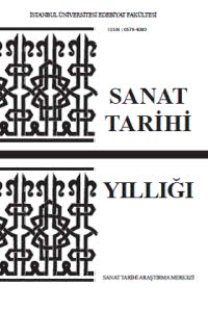Endor Cadısı İkonografisi
Avrupa’da cadılık kavramının önemli ölçüde kadın cinsiyetini işaret eder hale gelmesi ve engizisyon mahkemelerinin sapkın addettiği mezheplerden cadılık davalarına yönelmesiyle tarihte yeni bir sayfa açılmıştır. Açılan bu sayfada, geniş yelpazeye sahip halk inançlarından ve bazı dini kaynaklardan beslenen yeni bir cadılık ve demonoloji (kötü ruh ve cinleri ele alan bir teoloji alanı) literatürü geliştirilmiştir. Bu literatür Augustinus gibi erken dönem Kilise Babalarından cadı davaları sona erene kadar ortaya çıkmış birçok dinbilimcinin fikirleri ile inşa edilmiştir. Bu noktada Endor Cadısı konusu Kutsal Kitap’ta değinilen tek cadı figürü olması sebebiyle kritik bir rol üstlenir. Onun kimliğini cadı olarak tarif etmek her ne kadar tartışmalı olsa da Endorlu kadının Peygamber Samuel’in ruhunu çağırarak döneminin kralı Saul’a gelecekten bilgi aktarılmasını sağlaması nekromansi uygulaması olarak kabul edilmiştir. Böylece, Endor Cadısı Kutsal Kitap kaynaklı bir karakter olması nedeniyle demonoloji literatüründe cadılığın varlığını ispat eden anahtar kelimelerden biri haline gelerek sanat yapıtlarında da kendine yer bulur. Çalışmamız, Endor Cadısı konusundaki dinbilimsel veriler ışığında konu hakkında ortaya çıkartılmış en erken minyatür örneklerinden 19. yüzyıla kadar üretilmiş sanat yapıtlarının ikonografik çözümlemelerini ele almıştır. Diğer tarafta, sanat tarihinde büyücülük konusunu ele alan başka eserler ile Endor Cadısı temasını ayıran gösterim kalıpları saptanmıştır. Bu doğrultuda Avrupa tarihinin kırılma noktalarından biri olan cadı avı furyası (1430-1780) öncesinde genellikle Endorlu falcı olarak anılan figürün sanat eserlerinde Endor Cadısına nasıl dönüştüğü tarihsel gelişmeler ışığında çözümlenmiştir.
Anahtar Kelimeler:
Endor Cadısı, nekromansi, büyü, cadı, ikonografi
Witch of Endor Scene Iconography
Considering how witchcraft conception mostly pointed female sexuality in Europe and how the inquisition courts verged to witchcraft trials from the heretic groups, it can be said that history witnessed a ground-breaking turn in terms of witchery. As a result, nourished by the wide range of community beliefs and numerous religious sources, a new literature of witchery and demonology has been developed. The construction of such literature ranges from early church fathers like Augustinus to the various views of theologists until the end of the witchcraft trials. In this respect, being the only witch figure in the Holy Bible (Book), the Witch of Endor takes a critical role in the studies of witchery. Even though it is controversial to define her identity as a witch, the way woman of Endor called the spirit of prophet Samuel and informed the King Saul about future is accepted as a necromantic practice. Hence, for being originated from the Holy Bible, the Witch of Endor has become a demonstrative keyword in defining the identity of witch in Demonology and finds its representation in artworks as well. Thus, in the light of the theological research on the Witch of Endor, this study examines the iconographical analysis of the artworks about the Witch of Endor, beginning from the earliest miniature examples to the 19th century. On the other hand, this study also draws attention to the forms that separate the artworks foregrounding wizardry from the theme of Witch of Endor. Therefore, how a figure known as the fortune-teller from Endor long before the witchcraft rush (1430-1780), one of the turning points of the European history, is transformed to the Witch of Endor in the art works is examined in the light of historical developments.
Keywords:
The Witch of Endor, necromancy, sorcery, iconography,
___
- .
- ISSN: 0579-4080
- Yayın Aralığı: Yıllık
- Başlangıç: 1964
- Yayıncı: İstanbul Üniversitesi
